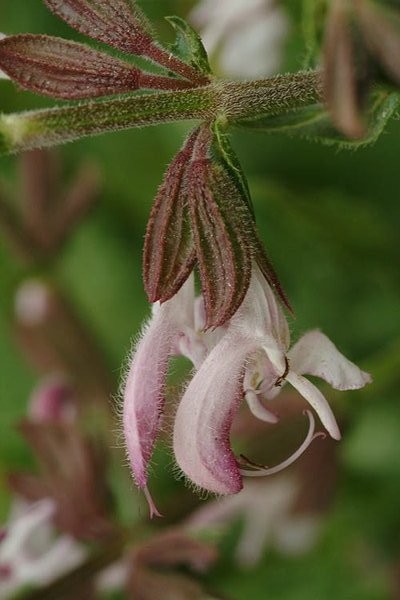Salvia eigii
(Salvia eigii)

Description
Salvia eigii is a herbaceous perennial native to Israel. The plant grows in a clump 30 cm high by 60 cm wide, with dark green leaves, the largest of which grow up to 30 cm long and 20 cm wide. The flower stalk grows up to 1 m high, with several 20–30 cm inflorescences which hold flowers growing in whorls. The flower's upper lip is purple, the lower lip is pink, with ruby lines going into the throat. The calyx is a prominent ruby color. Salvia eigii is named after the botanist Alexander Eig. Salvia is the largest genus of plants in the sage family Lamiaceae, with nearly 1000 species of shrubs, herbaceous perennials, and annuals. Within the Lamiaceae, Salvia is part of the tribe Mentheae within the subfamily Nepetoideae. One of several genera commonly referred to as sage, it includes two widely used herbs, Salvia officinalis (common sage, or just "sage") and Salvia rosmarinus (rosemary, formerly Rosmarinus officinalis). The genus is distributed throughout the Old World and the Americas (over 900 total species), with three distinct regions of diversity: Central America and South America (approximately 600 species); Central Asia and the Mediterranean (250 species); Eastern Asia (90 species). The name Salvia derives from Latin salvia (sage), from salvus (safe, secure, healthy), an adjective related to salūs (health, well-being, prosperity or salvation), and salvēre (to feel healthy, to heal). Pliny the Elder was the first author known to describe a plant called "Salvia" by the Romans, likely describing the type species for the genus Salvia, Salvia officinalis.
Taxonomic tree:







